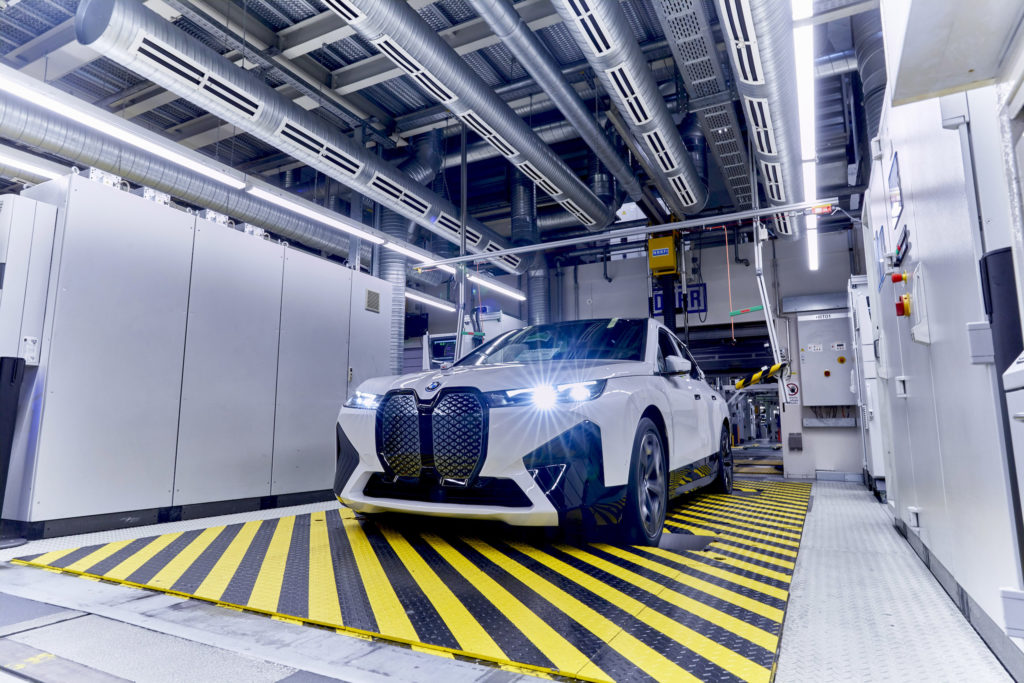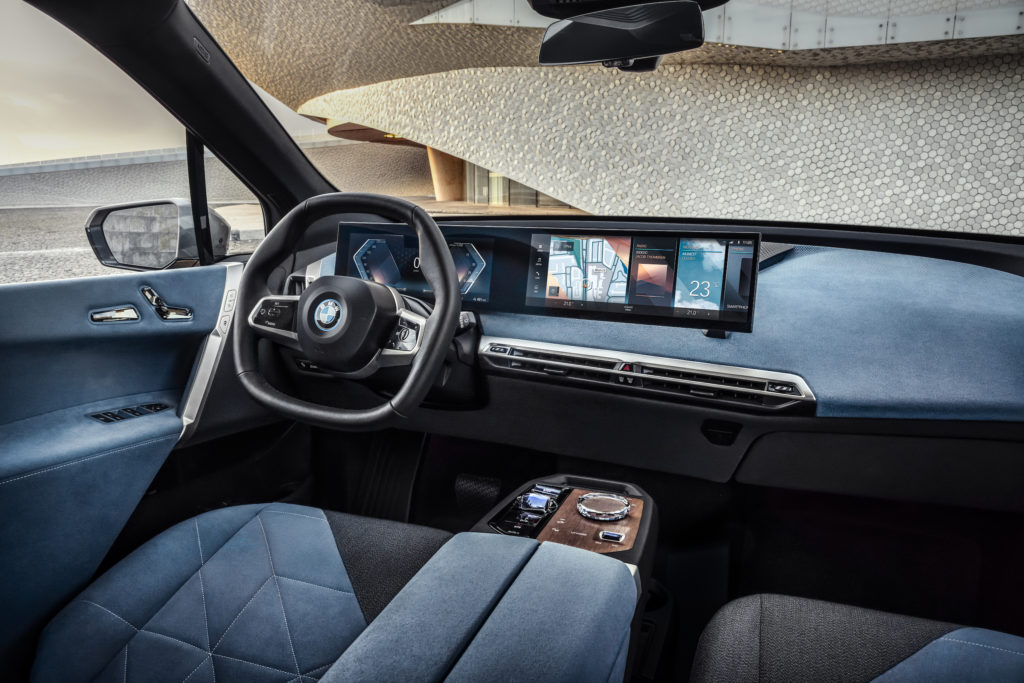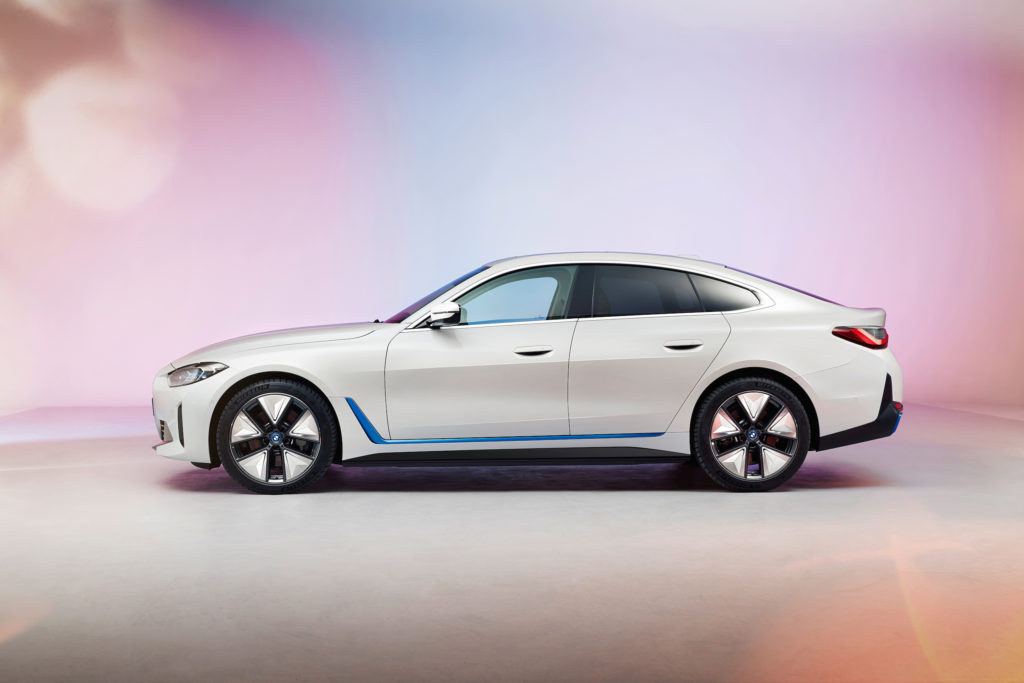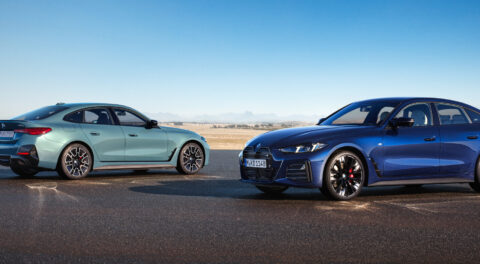We’re now five years removed from the 100th anniversary of the founding of BMW, and the first two key models which serve as part of the automaker’s next-generation strategy have been revealed. They are, of course, the iX and i4, and by now, you’ve likely heard plenty about both. The world was introduced to the Vision iNext concept, which would become the iX, back in 2018 at the Paris Motor Show, while the i4 first appeared as the i Vision Dynamics concept at IAA Frankfurt in 2017.
Much has changed about the world in the years since these concepts were first unveiled, and the same is true of the market for electric vehicles, which continues to advance at a brisk pace, with range, power, performance, and accompanying technology like autonomous capability seemingly accelerating. With BMW’s reputation in mind, neither the i4 or iX are expected to disappoint in any of these categories, but even at this stage, we still don’t know everything about either model, including crucial details as just how autonomous they might be, which was a core pillar of BMW’s corporate strategy for the next 100 years up until recent press releases.
As far as actual driving experience and the things that make it such are concerned though, both the iX and i4 have a lot to offer. Let’s begin with the iX. Roughly the same size as the current X5, but with the roof height of an X6, and wheels comparable to those on the X7, the iX wears contentious styling, but has clearly been designed with every day use in mind. The X5 is one of the most important BMW models of the last twenty years and was a paragon of things to come when it was joined the lineup at the end of the last millennium. Basing the brand’s new technological flagship on something of a similar footprint only makes sense. After all, if you were to envision a single BMW vehicle in which to do it all with little compromise, would it not look analogous to the iX or X5?

The model that’s coming to the U.S. market will be the iX xDrive50, which will boast the electric equivalent of 500 horsepower and an estimated 300 miles of range. Those figures come courtesy of fifth-generation BMW eDrive technology—which uses no rare earth metals—with two motors driving all four wheels. For Europe and other global markets, an iX xDrive40 is planned, with the equivalent of roughly 320 horsepower and 250 miles worth of range. An M performance model is also rumored to be in the pipeline, with more than 600 horsepower on tap. The iX xDrive50 uses a battery pack with a capacity of more than 100 kWh, and is said to be able to take on 75 miles of range in just ten minutes via DC fast charging at up to 200 kW. BMW lists an acceleration time from zero to 62 mph of under five seconds with top speed electronically limited to 124 mph.
BMW lists an MSRP starting in the mid-$80,000 range, which means the iX going to slot roughly in line with corporate stablemates like the V8-powered X5 xDrive M50i and the six-cylinder X7 xDrive40i, and will follow them up to and likely beyond the six-figure threshold with options and packages. Both the iX and i4 will come with iDrive 8, and will be made using a high degree of recycled materials including plastics, steel, and aluminum. After promising fully autonomous vehicles by 2021—the iX and i4 will both enter the market for the 2022 model year—BMW is being oddly coy about just how capable either model will be. Nevertheless, both are expected to come with the automaker’s latest suite of self-driving tech, an array of sensors for which are housed in the large veritcally-oriented kidney grilles.
American customers can pre-order the iX starting in June of this year, and the first examples will arrive here in early 2022. Advance orders have already begun in other parts of the world, and according to BMWBlog, in Norway, a country with an exceptionally high take-rate for electric vehicles, the iX broke records in a single day. Unlike other names in the EV space which are keen to sell reservations for upcoming models, the numbers reported for the iX are pre-orders, which means they have a high likelihood of turning into actual vehicle sales. The BMW iX is being produced in BMW Group Plant Dingolfing, which received extensive investment and retooling for the model.

BMW also teased the upcoming i4 this week in what appears to be the closest thing resembling a production-ready example at its annual conference. Although much of BMW’s press has been appropriately centered around the iX, the i4 is the model we’re more excited about as BMW enthusiasts because it is essentially an electric BMW sport sedan. More specifically based on—or perhaps inspired by—the 4 Series Gran Coupé, the i4 is a traditional four-door BMW which is promised to hold true to the tenets that originally drew many of us to the brand.
As we learned back in 2019, the i4 M50 xDrive will come with 523 horsepower—more than the current M3 and M4 Competition—and 300 miles of range. BMW lists an acceleration time from from zero to 60 mph in about four seconds, and although more pedestrian versions of the i4 for other markets will use a single three-phase eDrive motor, the M50 xDrive will use one for each axle, and will top out at 124 when it hits the electronic governor.

Like a gasoline-burning G20 3 Series, the i4 will offer seventeen cubic-feet of trunk volume. It will also come with iDrive 8, but once again like the iX, details as to its autonomous driving capabilities have not yet been divulged. No images of the interior have been made public since the i4 concept was revealed a year ago.
The i4’s market introduction will be for the 2022 model year, and will arrive alongside the iX. The all-electric BMW sport sedan of the future is being produced at the automaker’s home plant in Munich, Germany, which was recently the subject of an extensive renovation and retooling effort in preparation for the new model. Advance orders and availability have yet to be announced; BMW is promising full details for the model in the coming weeks.
Both the i4 and iX are built atop BMW’s modular rear-wheel-drive CLAR (cluster architecture) platform, which was recently updated. This highly adaptable architecture underpins numerous other current BMWs from the 3 Series through the 8 Series, and the X3 through the X7. The platform also serves as the basis for gasoline, diesel, hybrid, and electric vehicles, but one thing we can’t help but notice about the i4 is its ride height and wheel gap, which seem reminiscent of BMW’s G30 5 Series-based “Power BEV” Lucy, that had a large battery pack visible down below its side skirts.

Of course, the big question on every BMW owner’s mind is how will the iX, and more specifically the i4, drive? For the deepest look into the i4 yet, check out the video below from BMW, which explains elements of the development and testing process and shows the new model being put through its paces.—Alex Tock
[Photos courtesy BMW AG.]





















